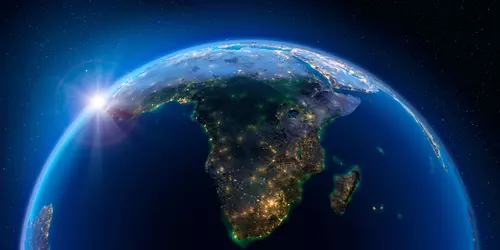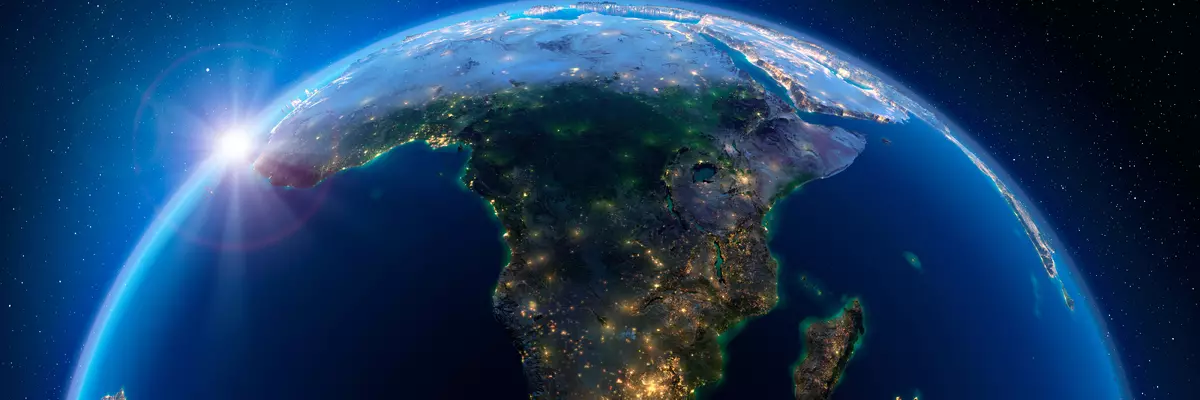The climate year of Africa
Africa consists of 53 independent states and is the second largest continent on earth in terms of area. It is a fact that Africa is located in the hottest climate zone of the world. In most areas, deserts have developed due to the lack of rain. There, extreme temperature fluctuations between day and night temperatures are observable. As the sights and scenic beauties of Africa differ, so there are also different climatic zones. That is why a subdivision by areas is necessary. Almost one third of the continent consists of desert. The temperature fluctuations in the desert areas are enormous: while it can get hot to over 50 degrees during the day, the temperatures drop to -10 degrees at night during the winter months.
General information about Africa
Amphitheater of El Djem
Tunisia - It holds 35,000 spectators and was built in 230 AD. Thus, it almost reaches the size of the Colosseum in Rome. The citizens hid there from the Roman tax collectors. The building has been extensively reconstructed in the meantime. Today it serves as a venue for theater performances, concerts, etc.
Historical Remains in Algeria
Algeria - In Algeria there are ruins of a mountain fortress at 1000 m altitude. In 1007, the 7 km perimeter wall was built to protect the fortress city. In 1152 or so the fortress was destroyed by the Almohads. Since 1980 the ruins belong to the Unesco world cultural heritage.
The pyramids of Giza
Egypt - on the western edge of the Nile Valley are the oldest surviving structures of mankind: the pyramids of Giza. As the only preserved of the seven wonders of the ancient world, they have been a World Heritage Site since 1979.
Ait Ben Haddou
Morocco - This well-preserved adobe settlement in the southeast presents a relatively rare picture. It was built directly on the slope on the bank of the river Asif Mellah at an altitude of 1,300 meters. The settlement is characterized by houses standing close to each other, some of which are nested together. It looks like a castle because of the many ornamented towers.
Egyptian Museum
Cairo - It was built in 1900 and tourists can admire artworks from different periods here. 120,000 artifacts are housed in the Egyptian Museum. These include, for example, mummies of the pharaohs of the New Kingdom, jewelry of Queen Ahotep, from the tomb of Tutankhamen findings.
Amboseli National Park
Kenya - It is located in the southwest of the continent to border with Tanzania and is home to about 800 elephants as well as zebras, gazelles, wildebeests, lions, hyenas and cheetahs amidst swamps, savannah landscapes and acacia forests. Furthermore, the park is home to about 400 species of birds, reptiles and amphibians. Amboseli National Park offers breathtaking views of Mount Kilimanjaro and parts of Africa's landscape.
Baobab trees in Madagascar
Madagascar - Lots of baobab trees line the sides of roads like an avenue in western Madagascar as remnants of the former dense tropical forests that were once there. The trees have grown very large, the largest measuring about 30 meters in height. They also have a proud age of several hundred years. For tourists, the baobab trees serve as a popular photo motif.
The Arts and Crafts Street - Rue des Artisans
Togo - On the market square in Lomé is the Rue des Artisants. Here tourists can find any wooden carvings of masks, chairs or figures, as well as bags, clothes, jewelry made of African fabric. This street always represents something special for tourists, so that Europeans meet there their same again
Kruger National Park
South Africa - This park covers a size of 2 million hectares. This national park has great diversity in plant and animal life. In the north of the park there are many baobabs. In the center lives a large population of wild cats. Towards the south, the land is more like a savannah. The diversity of animals and plants is enormous: 34 amphibian species, 114 reptiles, 49 fish species, 507 bird species and 147 mammals.
Cape Town at Africa's southern tip
South Africa - What makes Cape Town are eventful historical backgrounds and the flair of a big city. In the center of the city there are many sights and museums. Cape Town is located directly at its landmark the Table Mountain. Tourists can climb it with a cable car.
Tourism Africa
North Africa
On the coast of North Africa (i.e., the countries near the Mediterranean Sea), the climate is Mediterranean, similar to the weather conditions in the region around Cape Town. Further inland is the Sahara Desert, which is about 5,000 km long (west-east region) and 2,000 km long (north-south region). In the countries located there is accordingly very dry and hot desert climate.
Central Africa
In the areas that are close to the equator are the humid tropics. Here, in contrast to the desert climate, falls larger amounts of rainfall.
West Africa
West Africa is home to the tropical rainforests. As the name suggests, this region has a tropical rainy climate. The geographical position of West Africa (east and north of the Atlantic and south of the Sahara) favors the emergence of the West African monsoon in the period from June to September. This is because the temperature differences give rise to the high humidity and the associated monsoon rains of rainfall values up to about 2,000 mm per year.
East Africa
Tanzania and Kenya have a major rainy season from late March to early May and a minor rainy season from November to December. The states on the east coast have a subtropical climate. During the day, temperatures rarely rise above the 30-degree mark and at night it cools down to below 20 degrees. Only the higher altitudes have a harsher climate.
South Africa
On the west coast of South Africa is the Namib Desert, which is the result of an interaction between the condensation of humidity on the coast and the warming of the air. The Cape Town region has a Mediterranean climate with warm summers and cold winters in relation to the rest of Africa.













